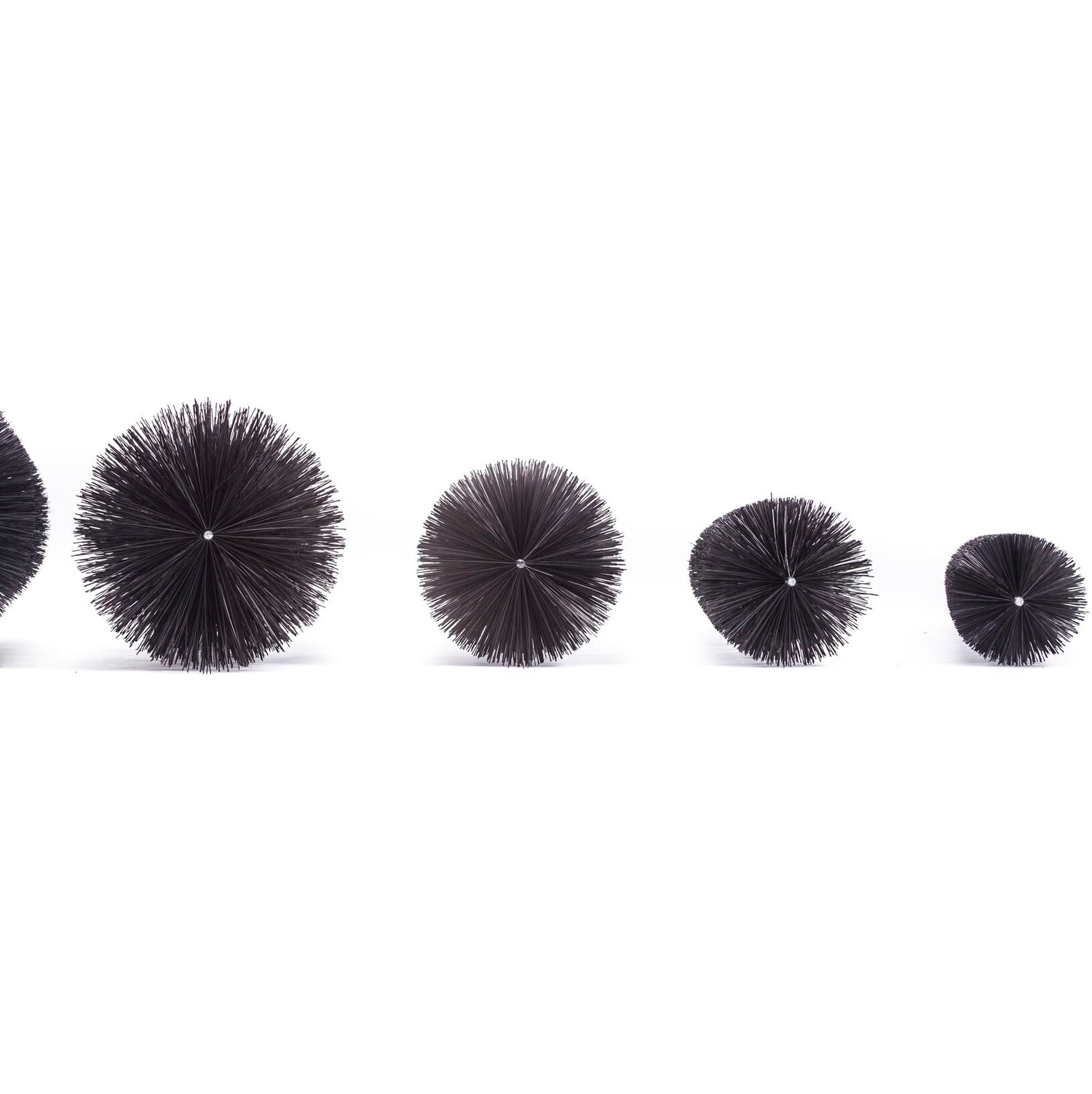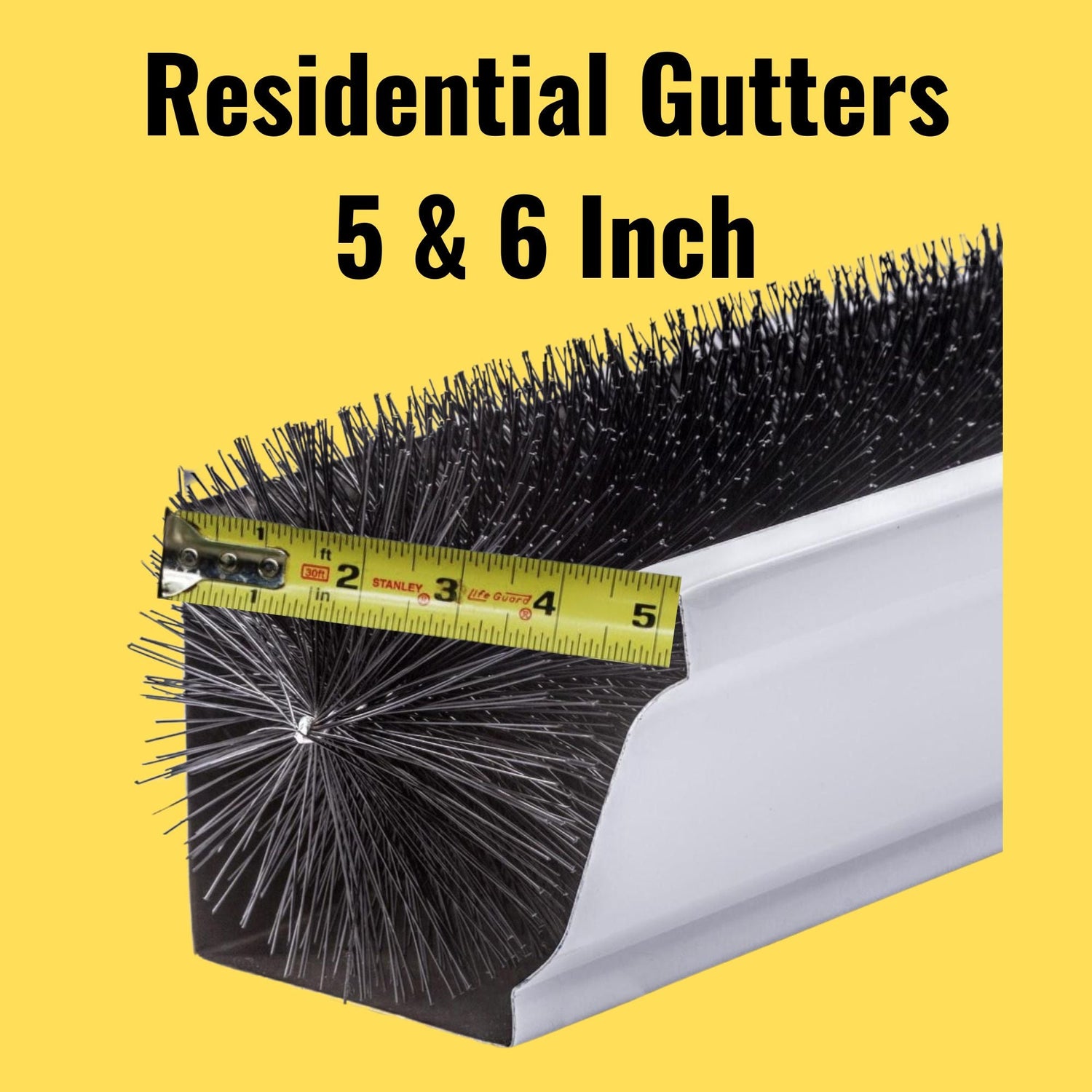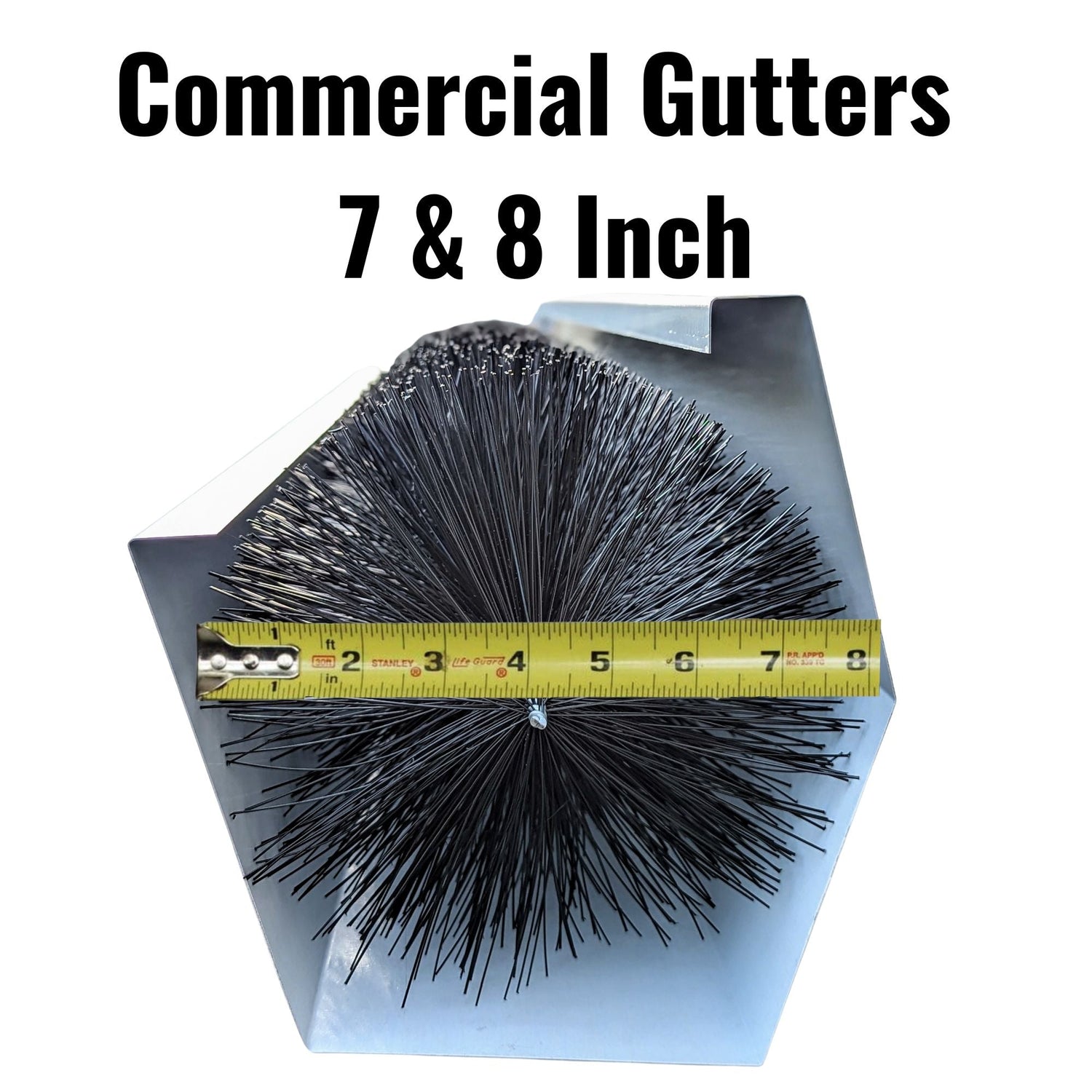Everyone knows leaves and other tree droppings collect inside gutters creating gutter clogs that can cause rain water to pour over the edge of the gutter. People are well versed in the concept that preventative maintenance, namely gutter cleaning, can save money by helping to avoid expensive issues caused by clogged gutters; such as rotted wood, windows sill damage, bugs attacking wet and damp areas, landscape erosion, basement water, foundation damage etc. What people do not realize is that snow, slush and ice also decrease water flow and cause that “solid block of ice”, but there is something you can easily do to improve the performance of your gutters in the winter.

Just as leaves cause gutter clogs, snow slush and ice can also clog the gutters. Imagine an unprotected gutter in the winter after a snow storm, obviously the gutter fills with snow. As temperature conditions change toward melting, the water attempts to filter through the snow/slush in an attempt to exit the outlet tube. I remember as a kid walking home from school after a snowstorm, I was always amazed at how a bank of snow would dam the water causing deep puddles along the side of the road. I was always equally amazed at the fact that the water did not instantly melt the snow or push the snow away. As melting occurs, the water is just barely above the freezing temperature and as it flows it is carrying particles of snow and ice. In the gutter, as that frigid flowing water filters through the snow toward the outlet tube, the snow continues to densify over the outlet tube. Melting from the roof, or rain, continues to fill the unprotected gutter, but the more it filters through the snow, the more it deposits more snow and ice particles so the flow through the outlet tube becomes slower and slower; similar to the way any filter reaches capacity and slows flow. Although the gutter is draining slowly, the gutter eventually fills up completely with water (or slush) because the rate at which the melting water is entering the gutter from the roof exceeds the rate of the water exiting the blocked outlet tube. In short, the snow, slush and ice clogs the gutter causing it to fill completely. That evening, the temperature drops below freezing and the gutter becomes a solid block of ice. It is common in northern winter climates, that even in ambient temperatures below freezing, each day the sunshine will cause small periods of melting. Once the gutter has become a solid block of ice and daily short periods of melting occur, the water has no place to drain, therefore small amounts of melting actually add to the icing condition and the block of ice actually grows. Daily cycles of minor melting during cold conditions continue to repeat and the ice grows larger and larger eventually connecting the gutter to the roof.
The above mentioned scenario is common in colder climates and most people simply accept it as inevitable, however installing GutterBrush simple leaf guard into the gutter, can have a dramatic improvement by decreasing the ice dams and the icicles that result. A roofer of over 30 years explained to me that the benefits of the GutterBrush simple leaf guard system in the winter, are just as positive as the primary objective of keeping leaves and debris from clogging the gutter. Based on his actual experiences, that long time roofer went on to explain the following information to me. When a gutter is protected with GutterBrush simple leaf guard, the snow and slush actually sit atop the brush leaving the flow channel open for drainage.

I worked outside all winter long as a roofer for over 20 years and I am well aware that conditions can occur that are extreme, when everything will become solid ice, but for the most part, the snow slush and ice remain on top of the GutterBrush while the bottom of the brush and the lower portion of the gutter remain open to allow water flow between and around the bristles. Click here and scroll down one picture to see a "cut-away" view of a protected gutter in the winter. Due to the fact that the snow (and slush) is suspended on and in the brush leaving an open flow channel at the lower portion of the bristles, it can not slide to the outlet tube, densify and clog. The entire flow channel at the lower portion of the gutter trough stays open for water flow, therefore as the melting water enters the gutter, it flows through and exits the outlet tube. By not allowing a “snow-clog”, the presence of GutterBrush improves the flow and greatly decreases the chance of the gutter filling up and freezing because there is no “bottleneck”. With the presence of GutterBrush, the gutter does not become a solid block of ice so each day when short periods of melting occur, the condition improves day-by-day as opposed to becoming a much worse larger block of ice. Countless numbers of customers have explained that prior to installing GutterBrush, they got an abundance of icicles and since installing GutterBrush the icicles have disappeared and the winter flow is greatly improved. It stands to reason that if you give a snowball access to the outlet tube, it will block the drainage but if you keep that snowball from contacting the bottom of the gutter, it can do no harm. Additionally, a passive positive affect is also that the brush has black exposed bristles that absorb the warmth of sun and transfer that melting energy to brush’s core to further improve the gutter’s cold weather drainage. Visit www.gutterbrush.com to learn more about this simple leaf guard system, there is a page to help you measure to fit your gutters. Check out the videos, lots of information as well as sizing samples so you can see the quality and check the fit of this simple but intelligent gutter guard product.
Alex O’Hanley




